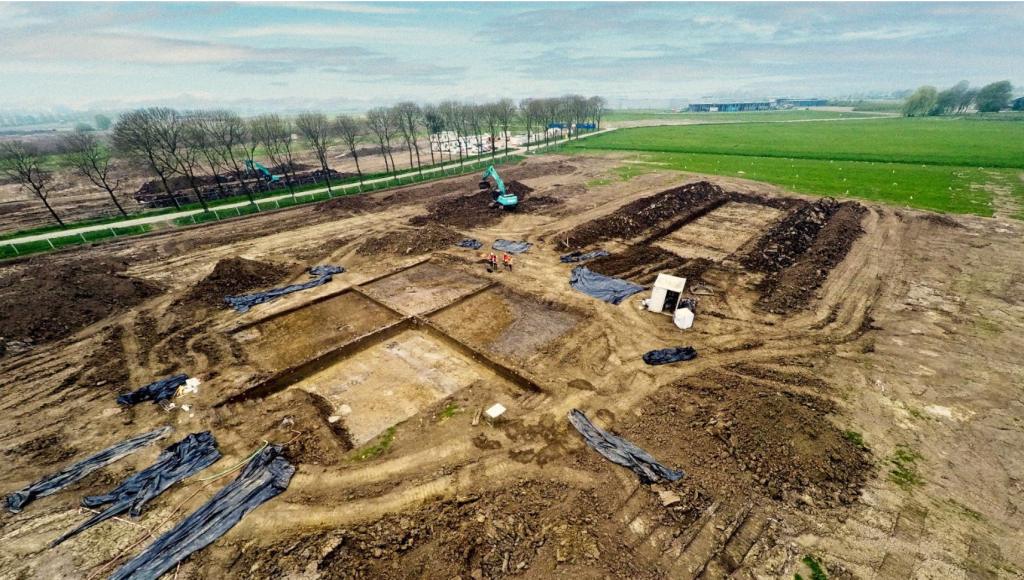SITE Santa Fe Relaunches Acclaimed Biennial, with Cecilia Alemani as Next Curator
SITE Santa Fe will relaunch its esteemed biennial in 2025, to mark the 30th anniversary of the founding of both the show and the New Mexico museum where it is held. Now, the biennial will be called SITE SANTA FE International. The 2025 edition—the first since 2018—will be curated by Cecilia Alemani.
Alemani is currently the director and chief curator of High Line Art in New York, where she has commissioned works by closely watched artists like Simone Leigh, Meriem Bennani, and Sam Durant. She also curated the 2022 Venice Biennale’s main exhibition, “The Milk of Dreams,” and has more recently organized a Tetsuya Ishida survey for Gagosian gallery in New York, an Anu Põder survey at the Muzeum Susch in Switzerland, and “Making Their Mark,” the first public presentation of the Shah Garg Collection.
Louis Grachos, SITE Santa Fe’s director, said that Alemani’s Venice Biennale was one of the reasons he wanted her to organize his museum’s biennial. Another was that she had never organized a US biennial previously.
“One of the things that I so admire about Cecilia is the complex nature of how she constructs exhibitions—it’s a rich methodology,” Grachos told ARTnews. “It’s not what I’d call a common in the curatorial world. She does a lot of research historically. In Venice, she brought in history. She brought in artists that we knew—or we thought we knew—into a context and a theme that was really rich.”
Alemani said, “The way I try to work is always starting from the artists and starting discussions with the artist to understand what’s at the heart of what they’re thinking about right now. That’s what drove the Venice Biennale in a much different scale. But, especially here, it’s about understanding what motivates artists.”
Both Grachos and Alemani said that the upcoming International will be different from what Alemani did in Venice two years ago, as this one will take into account the history of Santa Fe and aim to place it in a broader context.
When the SITE Santa Fe Biennial first launched in 1995, it did so in a landscape very different than the one the art world knows today. It has long billed itself as the first international biennial of contemporary art in the US because at the time of its founding, only two other major recurring exhibitions existed: the Whitney Biennial, which focused on contemporary American art, and the Carnegie International, which happened every three to five years.
Over the years, it has attracted a cohort of highly respected curators, several of whom had also previously organized the Venice Biennale: Francesco Bonami, Rosa Martínez, and Robert Storr. Dave Hickey, Candice Hopkins, José Luis Blondet, and Ruba Katrib have also organized the show.
“The interesting exercise for me is this continuous exercise of zooming in and out,” Alemani said. “You have to train this muscle of being very aware of the site and where the exhibition takes place, and understanding that the ambition of this exhibition is also to be on the world map—to be part of a larger discourse that is very different from when it started 30 years ago.”
In 2012, shortly after Irene Hofmann took over as director, SITE Santa Fe canceled its upcoming edition in order to rethink the biennial’s place in a crowded field. Delayed to 2014, it was retitled SITElines for the next three iterations and took a hemispheric approach, focusing on art of the Americas and recommitting itself to Santa Fe.
Grachos previously served as director of SITE Santa Fe from 1996 to 2003 and returned in 2021. When he started, among the first things he did was start a strategic plan to map out the institution’s future. “The one thing that came out of those discussions that was crystal clear was the value of SITE Santa Fe’s International Exhibition, not just for the growth of the organization and in keeping us in, what I would call the global mix of what goes on in contemporary art, but it was also really important for the community,” he said. (SITE Santa Fe is also one of the two commissioning institutions of this year’s US Pavilion at the Venice Biennale, which will be done by Jeffrey Gibson.)
Alemani added, “It’s not necessarily to do something different, but it is the time to turn the page and to do something that might in a way reinsert the exhibition in a broader context.”
Globally, biennials have grown exponentially over the past 30 years, with well over 200 indexed by the Biennial Foundation. Within the United States alone, there are at least a dozen recurring exhibitions, including Prospect in New Orleans, Made in L.A. at the Hammer Museum, the New Museum Triennial, the Front Triennial in Ohio, La Trienal at El Museo del Barrio, and the Getty Foundation’s Pacific Standard Time initiative. A few even launched last year: the Tennessee Triennial for Contemporary Art, Counterpublic in St. Louis, and Converge 45 in Portland, Oregon.
“Personally, I don’t think there’s enough of those shows,” Grachos said. “The impact that these shows have locally in their communities is long standing. I still today see and talk to people who remember Dave Hickey’s biennial in 2001, for example, or Rosa Martínez’s project in Los Alamos in 1999. The format, where a curator is free of market issues and institutional goals that can often be based on collection, gives them the flexibility to really take chances to be a little bit more courageous and innovative in engaging in the community.”
“Santa Fe is kind of the opposite of what happened in Venice,” Alemani said. “I don’t think it’s an exhibition that wants to capture exactly a snapshot of the global art scene. It’s just very different in nature.”
While there are more chances to see art in a biennial-style context these days, Grachos said he thinks what Alemani will do next year will be worth making the trip to Santa Fe. “The sensitivity in the way to Cecilia thinks—it’s going to be a unique project to this community,” he said. “As a longtime museum person, I really believe in the curated show. For me, it’s still really meaningful, and it’s a way that Santa Fe can contribute not just to our community here in New Mexico, but also to the bigger curatorial field.”



